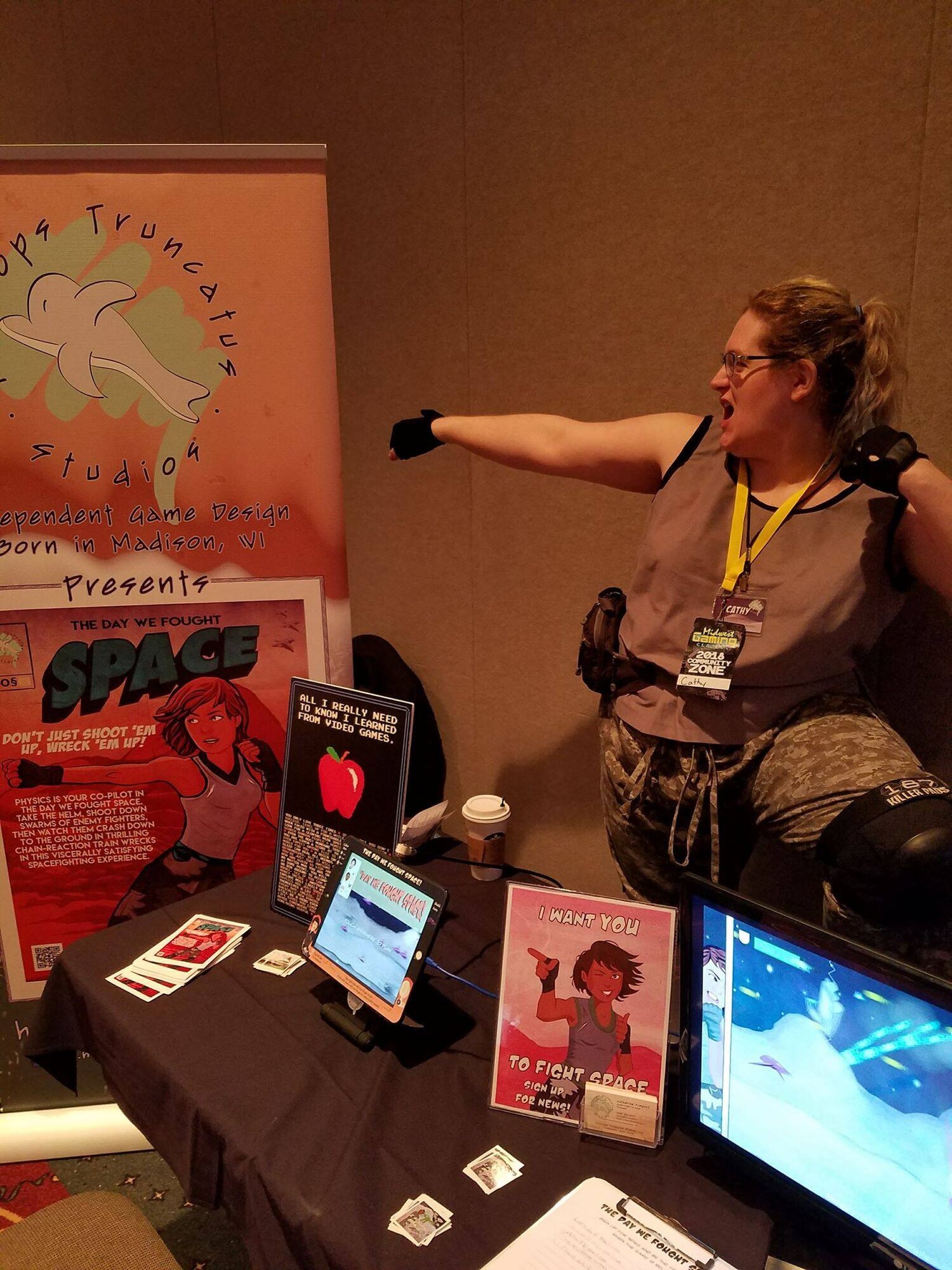Nov 2019: One Year Wiser
Our dev team returned to GDEX last month and it marked an important milestone for our game, as returning for a second GDEX marked us surviving a metaphoric lap around the national convention circuit — attending PAX South, East, and West in 2019 as well as a stop at our “home” convention of the Midwest Gaming Classic.
It also marked the end of the first year of our “new” booth setup (shown at right), after leveling up our old booth setup (shown at left).
We’ve grown, we’ve learned, and now we’re here to share some of the things we’ve picked up along this wild ride.
1. Kiosks catch peoples’ attention. iPad stands on a table do not.
Some nice kiosks are a critical investment if you’re showing off a mobile or tablet game. Even with some nice, custom-printed table stands, people would often walk by our table, not entirely sure that there was a game to be played at our booth, despite, you know, the fact that we were at a gaming convention. Someone had to be on duty at all times to try and gently funnel people’s attention to our humble display and assure them that yes, they were welcome to sit down and try our game.
With kiosks — plus some nice printed signage mounted on them — the form factor is just similar enough to an arcade cabinet that people wanted to come over and check out what we had going on. (There were still some questions, as the majority of games being shown provided players with joysticks, keyboards, mice, or VR headsets, but hopefully we’ve made some progress towards normalizing touchscreen games in these settings.)
2. Work your e-mail signup list into the demo.
One of my least favorite post-convention tasks was trying to decipher the handwriting of a hundred people hastily scribbling their e-mail address down on a clipboard so they can move on to the next game, and building an e-mail collection prompt into your demo not only saves you from the inevitable transcription errors.
This doesn’t, however, excuse you from asking players to sign up for your mailing list — a number of fans who initially skipped the e-mail prompt would go back and fill out their information after I gave them a quick run-down of how to keep in touch with us and hear about our eventual launch date.
3. Accessibility isn’t automatic. Have contingency plans.
When we bought our kiosks, we made sure to seek out some ADA-compliant display stands. For our first convention, they happened to work great, and we thought “job well done.” But… in our next convention, though, there were some fans we could have done better by — although we were able to eventually accommodate nearly every fan, sometimes it took some doing, and we could have been better prepared. These days, we make sure to check the layout for obstructions, have a spare out-of-enclosure iPad on hand and ready to go at all times, plus paired styluses and controllers ready to go.
4. Invest in some anti-fatigue mats.
You’re probably going to be doing a lot of standing. Make it easy on yourself.
5. Make sure the demo isn’t too easy.
Getting the difficulty curve just right for a demo is tricky, and I’m sure someone with more credentials to their name could write an entire article just about that. The one thing that surprised me most, though? Erring on the side of “too difficult” seemed to work better. At PAX East, we dropped players right into level 2 after completing a short tutorial mission, and after seeing a lot of players struggle and fail with this, I tweaked a few things and gave people a much gentler slope to climb… and, unfortunately, engagement seemed to drop off sharply.
This is a tough thing to predict, and can be even tougher to change once you’re live on-site — so, in lieu of providing you with any magical insights on how to craft the perfect demo-ready difficulty curve, I’d recommend the next best thing is to have a few different options ready to go, easy to switch between while you’re live.


